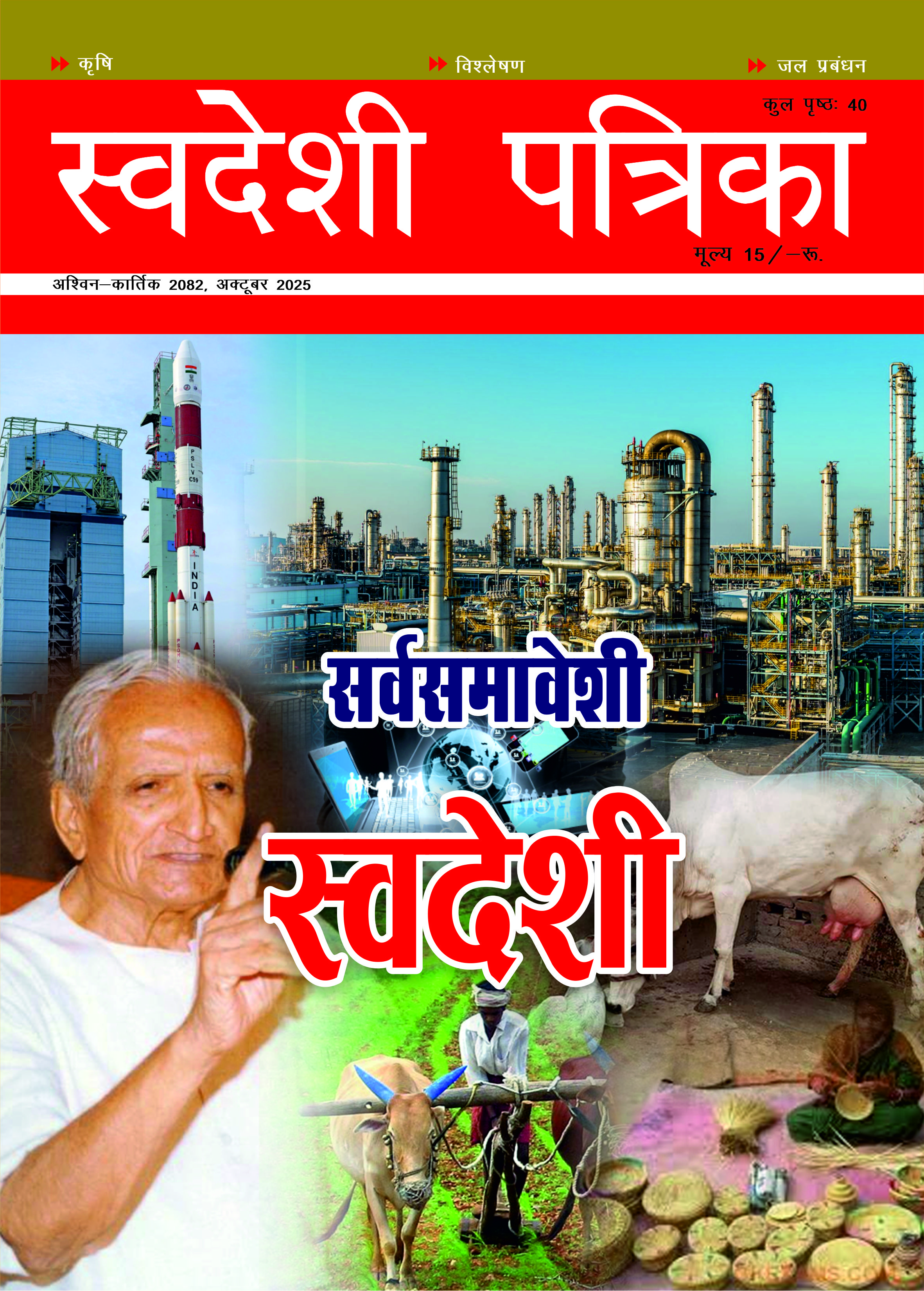
Rewinding the Voice of the Voiceless
No foreign conspiracy should dare to intimidate the country and its integrity and sovereignty of Bharat. Not just our security forces, the whole of the country must understand the deep-rooted stratagem in destabilising our motherland, Bharat Mata. Those who are accomplice to such conspiracies, must be severely punished as traitors. — Vinod Johri
When the layers of recent violent agitation in Leh, Ladakh are peeling off, the Central Investigation Agencies have found foreign conspiracies through funding the perpetrators of unrest in Leh. Whether the outcome of the investigations may be publicly disclosed, will always remain a question loaded with diplomatic expediencies and public interest and the larger interest of the country.
Before we discuss Leh violence led by Sonam Wangchuk, an activist on agitation for quite long time, we should know the background of Chinese aggression in Tibet and Ladakh. Who else will be interested in unrest in Ladakh for its strategic interest?
China is in illegal occupation of approximately 38,000 square kilometers of territory in India’s Union Territory of Ladakh, according to the Government of India Ministry of External Affairs. This disputed area is known as the Aksai Chin region, and it has been under Chinese control for decades. In addition to the 38,000 sq. km of Aksai Chin, China illegally acquired another 5,180 sq. km of Indian territory through the 1963 China-Pakistan “Boundary Agreement,” which India does not recognize. The border remains undemarcated, and disputes persist over the Line of Actual Control (LAC). The bulk of the territory of Aksai Chin, around 38,000 sq km, was seized by China following the 1962 Sino-Indian War. In total, India asserts that China illegally occupies more than 43,000 sq km of its land in the Ladakh region.
I had an occasion to tour Ladakh and drive from Leh to Pangong Tso about two years ago and stay in Nubra Valley overnight and travel along the river Shayok which passes on from Ladakh to Pakistan occupied Kashmir. It was a tough drive on boulders as the highways were under construction. Thus, I was travelling close to Jinjiang, old Sinkiang and POK. I could not go to Chushul, the nearest army post to China. I was told by the local people and driver that it would be the hazardous drive up to Chushul. This brought me close to local people’s miseries, atrocities and extreme violence faced by them by virtue of the Chinese army incursions up to Nubra valley and earlier the marauders from Pakistan in 1947-1948 there. I travelled across Khardungla pass and Changla Pass, both under snow fall and rains at that time.
None else than Dalai Lama in his memoir can describe the events of those times more authentically. So, I thought that some contents of his book ‘Voice of the Voiceless’ should be brought to the notice of the esteemed and avid readers. His memoirs are presented honestly. Peeping into the past helps understand and helps address the issues and disputes more comprehensively and pragmatically.
The then Prime Minister Shri Jawahar Lal Nehru agreed with Dalai Lama that it was useless to fight against the Chinese (at that time). He was emphatic, however, that Bharat could not support us and said that the Dalai Lama should go back to his country and try to work with the Chinese on the basis of Seventeen-point Agreement. When the Dalai Lama protested that the Chinese authorities had broken his trust and that he did not believe that the agreement was workable any longer, Shri Jawahar Lal Nehru said he would speak personally to the Chinese Premier Zhao Enlai. At one of the Dalai Lama’s meetings with Shri Jawahar Lal Nehru, he actually brought a copy of the agreement in his hand. Going through it point by point, he demonstrated how it could be the basis for a genuine model of autonomy and self-rule. Nehruji reported on his own conversations with Zhao Enlie and especially the unambiguous assurance Zhou had given him with respect to the autonomy of Tibet within the People’s Republic of China.
Even though Nehruji had not been able to come to the capital, he did end up putting a foot on Tibetan soil on his way to and back from Bhutan, which he visited in September 1958. He spent a night at Yadong, the very town where the Dalai Lama had fled in the 1950 when the Chinese communist army invaded from the eastern Tibet. A high-level Tibetan delegation was sent to formally welcome the Prime Minister and his daughter Indira Gandhi when they arrived. It was during this visit to Bhutan that Nehruji gave a strong assurance that it was Bharat’s wish to see Bhutan remain an independent country, with its own people choosing their own way of life and taking a path of progress according to their own will. This contrast between how Bhutan’s giant neighbour Bharat was treating it and how Tibet was being treated at that very moment by our giant neighbour to the east was, of course, too painfully striking to miss.
The cost of the conquest of Tibet for Tibetan nation and its people was obvious. But it is worth thinking more broadly about the geopolitical effects in the region. To begin with, for the first time in the history, the world’s two most populated nations had a long border that had to be increasingly militarised. Up until the invasion of the Tibet, there was only an Bharat-Tibetan border, and no such thing as Bharat-Chinese border. In his letter to the Prime Minister Shri Jawahar Lal Nehru on November 7, 1950, shortly before his death, India’s Deputy Prime Minister Sardar Ballabh Patel lamented ‘the expansion of China almost up to our gates. Throughout history, we have seldom worried about our North-East Frontier. The Himalayas have been regarded as an impenetrable barrier against any threat from the north. We had friendly Tibet which gave us no trouble’.
Just as Sardar Ballabh Patel worried, there was a Sino-Indian war in 1962, followed by another conflict in 1967. Sardar Ballabh Bhai Patel was more of a realist and pragmatist. Shri Jawahar Lal Nehru was worried about the world becoming too polarised between the North Atlantic Treaty Organisation (NATO) and the Warsaw Pact and, economically, between the north and the south. His dream of a non-aligned collaboration led to the signing of the Panchsheel Agreement, literally ‘five principles agreement’ between Bharat and China in 1954 - which set out a plan for mutual respect for each other’s territorial integrity, mutual non-aggression, non-interference in each other’s internal affairs, equality and mutual benefit, and peaceful coexistence. In brief, the invasion and the forcible occupation of Tibet had created long term instability on the Tibetan Plateau affecting a host of nations that traditionally relied on peace at their northern border – Bharat, Nepal, Bhutan and Myanmar. It is with this concern for peace and security in Asia in mind that the Dalai Lama later made the suggestion in his five-point piece plan of September 1987, that the Tibetan plateau be turned into a demilitarized buffer zone between Asia’s two largest military powers.
Ecologically speaking the Tibetan Plateau houses the source of many of the Asia’s greatest rivers including the Yarland Tsangpo (Brahmaputra), the Senge Khabab (Indus) which flow southwards and Dzachu (Mekong), Machu (Yellow River) and Drichu (Yangtze) which run east. The Communist Chinese occupation of Tibet has had a devastating effect on the health of these rivers with significant environmental consequences to many countries in Asia. In the future too, unless responsible custodianship of the sources of these major rivers is ensured, there may be significant conflicts in connection with the access to water, indispensable for the survival of the hundreds of millions of people in Bharat, Pakistan, Bangladesh, Myanmar, Laos, Thailand, Vietnam and Cambodia. Some environmental specialists refer to the Tibetan Plateau as the third pole to add to the north and south poles for the reasons including it being the largest repository of fresh water. In addition, the ecosystem of the plateau plays a crucial role in the regulation of the monsoon across South Asia.
Historically, with our cultural and religious practises that emphasise living in harmony with the nature, the Tibet’s natural environment, including flora and fauna, had never suffered excessive abuse at the hands of the human inhabitants of the vast plateau. Very worryingly, there were many reports that Communist China had installed nuclear missiles in a high altitude of the Tibetan plateau. Setting aside the implications for regional and international stability, the risk of the leaks of the mistakes carries a devastating threat to the fragile ecology. Were the waters of the rivers to be polluted, the destructive impact of the lives of many millions dependent on these rivers cannot be calculated.
When you take all these issues together, the militarization of the Tibetan plateau, which includes the stationing of nuclear weapons; an increasing security face-off between the two of the Asia’s largest armies across more than three thousand kilometres of border, of which some crucial parts remain disputed; and ecological destruction of the plateau through the deforestation and extensive mining, as well as unpredictable management of the sources of some of the Asia’s greatest rivers on whom the livelihoods of hundreds of millions depend - the invasion of Tibet has been truly tragic, not just for Tibetans but for the whole of the humanity too. It is the tragedy of historic proportions whose destructive fallout will continue to reverberate through the centuries.
Had Tibet been able to remain free, these geological and ecological problems would not exist. This is the plain truth1.
Volumes have been written on Bharat – China wars by the Army Generals and the Historians.
In the fall of 1962, not long before the onset of winter, the danger, Gyalo Thondup had been warning Bharat about for almost a decade, finally came to pass. The Chinese army attacked Bharatiya troops high in the mountains along the disputed borders of Aksai Chin and the North-East frontier agency, presently Arunachal Pradesh. The war did not last long. The Bharatiya forces were roundly defeated and badly humiliated. The Chinese troops quickly withdrew. The Indian Defence Minister Krishna Menon was forced to resign and the country’s national defence forces began a thorough reorganisation. Nehru’s stalwart efforts to appease the Chinese bending over backwards to please them, had come to naught. The Panchsheel Treaty was null and wide, and the days of Chinese-Indian Brotherhood were over. Nehruji’s rosy view of China had been an illusion. His policy of non-alignment had failed. The American strategy of provoking conflict between the two giants had worked2.
No foreign conspiracy should dare to intimidate the country and its integrity and sovereignty of Bharat. Not just our security forces, the whole of the country must understand the deep-rooted stratagem in destabilising our motherland, Bharat Mata. Those who are accomplice to such conspiracies, must be severely punished as traitors.
References:
- Book – Voice of the Voiceless – Over Seven Decades of the Struggle with China from My Land and My People – His Holiness the Dalai Lama – Harper Collins Publishers, Ireland, 2025, ISBN - 978–0–00–877409–7, Chapter – 3 – A Visit to India, Page – 21, 22,25, 43, 44, 46)
- Book - The Noodle Maker of Kalimpong – Vintage – Penguin Random House India Private Limited – Gyalo Thondup and Anne F. Thurston –ISBN 9788184003871, Chapter – 23 – Page – 223
Vinod Johri - Former Addl. Commissioner of Income Tax, Delhi


